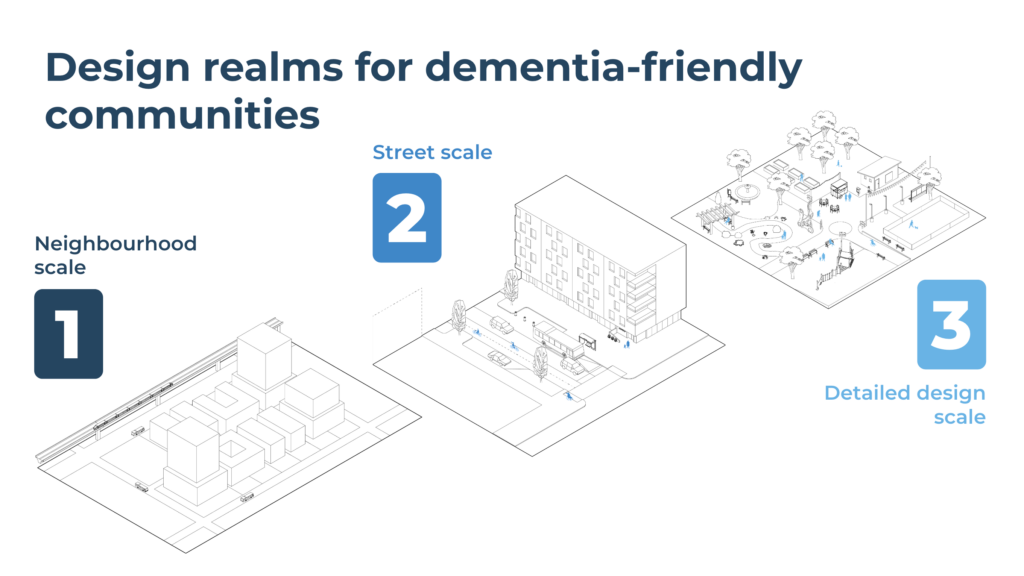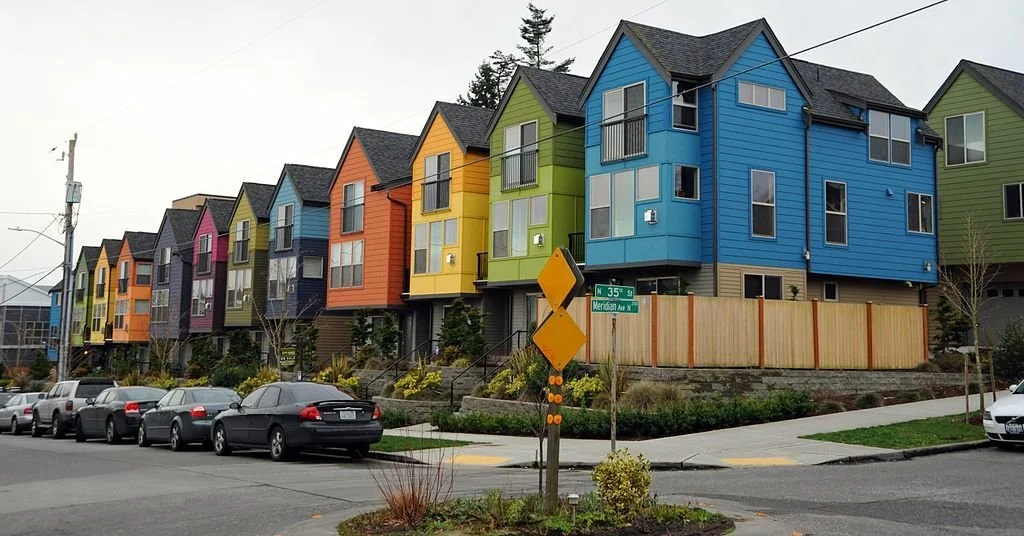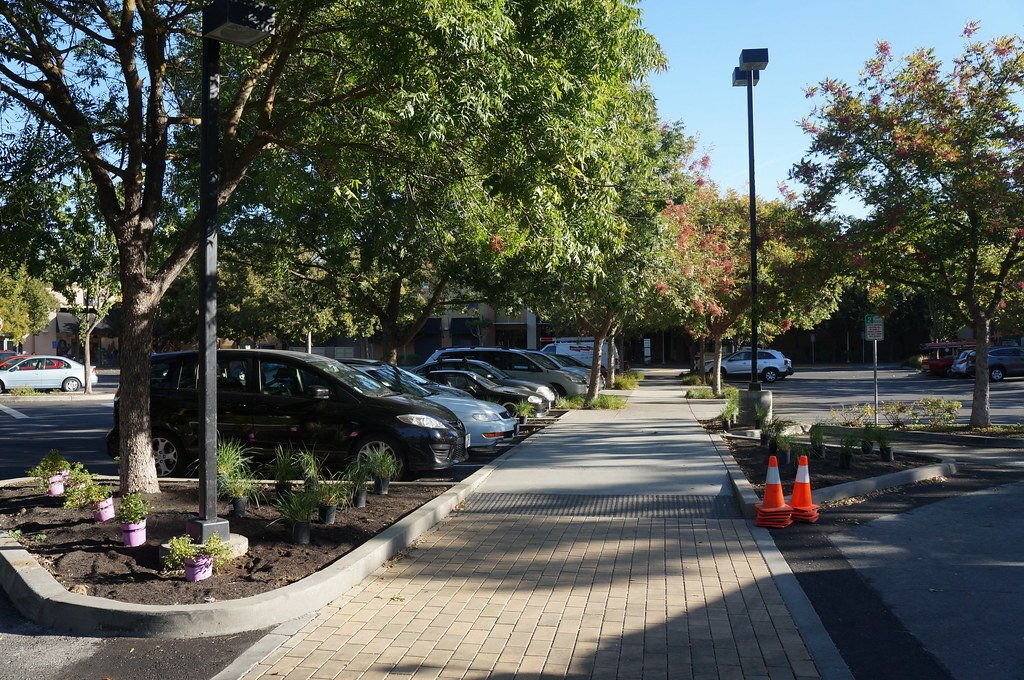How to design a dementia-inclusive community
Comfortable places to rest and socialize can help people living with dementia stay connected to their community. (Dario Valenzuela / Unsplash)
As Canada’s population ages, there is a growing interest in age-friendly and seniors-focused urban planning and design. In Vancouver, for example, seniors are the fastest-growing age group, growing at five times the rate of the population under 65.
As the number of older adults in our communities grows, so too does the prevalence of dementia. In Canada, 597,000 people were living with dementia in 2020. By 2030, that number is expected to nearly double, reaching close to one million.
People living with dementia—most of whom are 65 or older—are often lumped in with broader age-friendly plans. While age- and dementia-inclusive design overlap, there are crucial differences. On top of the challenges that come with aging—such as reduced mobility or social isolation due to more time spent at home—people living with dementia experience changes in their senses and perception of their surroundings, posing unique challenges for navigating around the neighbourhood.
To respond to this gap, Happy Cities worked with researchers at Simon Fraser University to create new guidelines for dementia-inclusive neighbourhoods—a set of planning and design strategies and actions that municipalities, developers, and community organizations can use to create more inclusive communities for older adults and people living with dementia. This document is the first of its kind to offer a guide on dementia-inclusive neighbourhood design in British Columbia and Canada.
These Guidelines are a knowledge mobilization tool as part of the DemSCAPE project (short for Dementia-inclusive Streets and Community Access, Participation, and Engagement), a joint initiative between researchers at SFU, UBC, and UNBC.
What is a dementia-inclusive community?
A dementia-inclusive community is one where people living with dementia feel fully included in society, both socially and in the design of the physical environment. People living with dementia often experience stigma—both from strangers and close family and friends alike—who may misunderstand the person’s capabilities and needs, or try to prevent them from leaving the house to run errands and other daily tasks.
“People often hear the word ‘Alzheimer’ and think of negative things,” one person told us. “They don’t see there’s life after the diagnosis. You can still exist.”
To support people living with dementia to continue participating in the community, education and awareness are key—but so is urban design. Research shows that factors including exercise, social connection, and reduced stress can slow the onset or progress of dementia. Further, older adults who are socially isolated are 50 per cent more likely to develop dementia than those who are not.
“The neighbourhood built environment has a critical role in supporting or constraining the everyday functional and social life of people living with dementia,” said Dr. Habib Chaudhury, gerontology professor at SFU and principal investigator on the DemSCAPE project. “Municipalities, developers, and businesses can make informed decisions to create responsive environments based on these Guidelines for a dementia-inclusive community.”
Around two thirds of people living with dementia in Canada live at home. If the neighbourhood does not meet the needs of people living with dementia, they may spend less time outside the home, which can lead to worsened cognitive, mental, and physical health—and social isolation. Dementia-inclusive design makes it safer and more comfortable for people living with dementia to spend time in public spaces—and feel welcome, included, and connected to their community while there.
Examples of dementia-inclusive neighbourhood design
Dementia-inclusive neighbourhood design includes high-level planning decisions—around land use, transit, and more—all the way down to aspects such as public art and the detailed design of street paving, public toilets, and lighting.
Dementia-inclusive design can be broken into three scales: the neighbourhood, street, and detailed design. (Happy Cities)
Dementia-inclusive design benefits everyone. For example, mixed-use zoning allows for people to walk for errands close to home. Safe streets and crosswalks minimize confusion for people living with dementia while reducing danger for all road users. At the same time, the Guidelines highlight specific considerations for people living with dementia, including design strategies that can help reduce risks that many people don’t think about—for example, glass facades can cause confusion about how to enter a building, repetitive building forms can lead people with dementia to get lost, and certain high-contrast patterns can lead to falls due to difficulties with depth perception.
To create an urban environment that supports the health and inclusion of people living with dementia, the design strategies in the Guidelines are informed by six key wellbeing principles: Neighbourhood spaces should be comfortable, accessible, familiar, safe, distinct, and legible.
There are six principles for dementia-inclusive design: comfortable, accessible, familiar, safe, distinct, and legible. (Happy Cities)
Here are some examples of what these principles look like in practice:
Repetitive building forms can cause confusion and disorientation. (Google Streetview)
Different colours can help people living with dementia recognize where they are. (Happy Cities)
Building entrances and facades that are all glass, or use similar styles and materials from one to the next, can confuse people living with dementia (above left). Varying colours and materials can help differentiate buildings, doors, homes, and entrances (above right), making buildings more legible and distinct.
A long, monotonous street block. (Tristan Cleveland / Happy Cities)
A gently winding street block. (Isabel Garcia / Happy Cities)
Gently winding streets (right) and short blocks are more legible and distinct for people living with dementia, because they offer a better view of what’s ahead and help distinguish one street from the next.
Pedestrian islands at a mid-block crossing. (Emma Avery / Happy Cities)
Tactile indicators and a pedestrian crossing signal. (Emma Avery / Happy Cities)
Conceptual diagram showing elements of dementia-inclusive crosswalk design . (Happy Cities)
Crosswalks that are frequent and accessible help people living with dementia to maintain independence and safely travel around the neighbourhood. Features including clearly marked crosswalks, audible and tactile cues, pedestrian islands, and more can help.
Community members paint a colourful mural on a traffic barrier. (Isabel Garcia / Happy Cities)
A lending library on a neighbourhood street. (Paul Sableman / Flickr)
Placemaking and public art make neighbourhood spaces and streets feel familiar and distinct, triggering memories and reminding people where they are. This includes features like lending libraries (right), community murals (left), gardens, public artworks, space for games, and more.
A large, disorienting parking lot. (Antonio Silveira / Flickr)
A small parking lot with a walking path. (UC Davis Arboretum and Public Garden / Flickr)
George W. Davis Seniors Centre (Bruce Damonte / David Baker Architects)
Large parking lots (left) are monotonous and confusing to navigate. Instead, design smaller parking areas—broken up with trees, greenery, and pedestrian paths (centre)—and include accessible and safe drop-off spaces at key locations (right).
Bench seating near a fountain in a park. (Alexander P Kapp / Wikimedia Commons)
Accessible seating, away from the noise of the street. (Emma Avery / Happy Cities)
Acoustic elements, such as running water, can help calm people, offer a break from busy urban spaces, and reduce background noise. Small clusters of seating are crucial to offer spaces to rest and enjoy calm green spaces, but must be accessible, comfortable, and familiar. More abstract seating—while playful and fun—may not be recognizable or usable to people living with dementia.
How to implement dementia-inclusive design
Improving the neighbourhood as a whole for people living with dementia takes time. As a starting point, cities can consider creating a dementia-inclusive path—a complete, safe, connected walking and rolling route that prioritizes all aspects of dementia-inclusive design. This path can connect to a community centre or other key destinations, while also allowing neighbourhoods to pilot, test, and maximize the impact of dementia-inclusive design. The path can double as a fun public space with seating, greenery, public art, placemaking, and interactive games and activities. In doing so, a dementia-inclusive path can become a destination for community members of all ages—while increasing awareness around living with dementia, reducing stigma, and supporting community connections.
Conceptual diagram of a dementia-inclusive path. (Happy Cities)
Dementia-inclusive neighbourhoods benefit everyone, by supporting social connection, autonomy, and other essential aspects of healthy living and wellbeing. The strategies and actions in these design guidelines—such as improving pedestrian paths, crosswalks, and placemaking—can improve streets and public spaces for all community members.
About the Guidelines
This is the first document of its kind to compile strategies and actions to improve the design of the neighbourhood built environment specifically for people living with dementia. Happy Cities created this document in collaboration with researchers from the DemSCAPE project, based at Simon Fraser University.
To learn more about how your municipality can implement these guidelines, please write to us at info@happycities.com


















